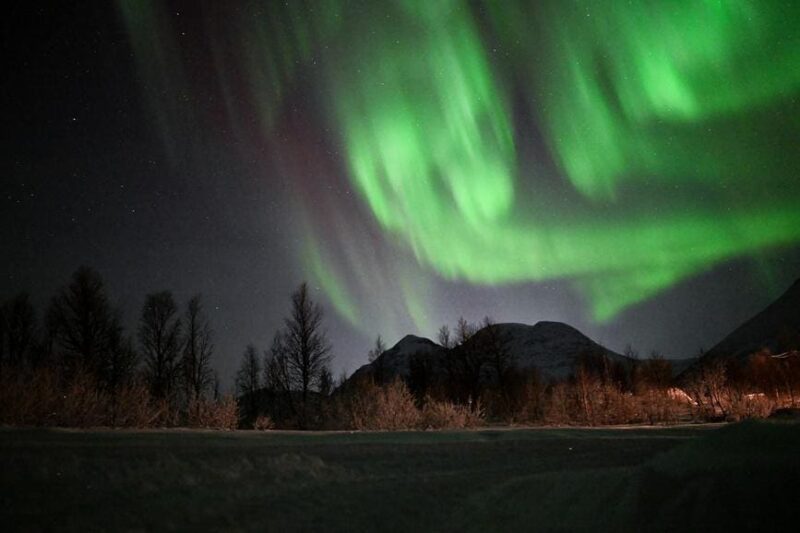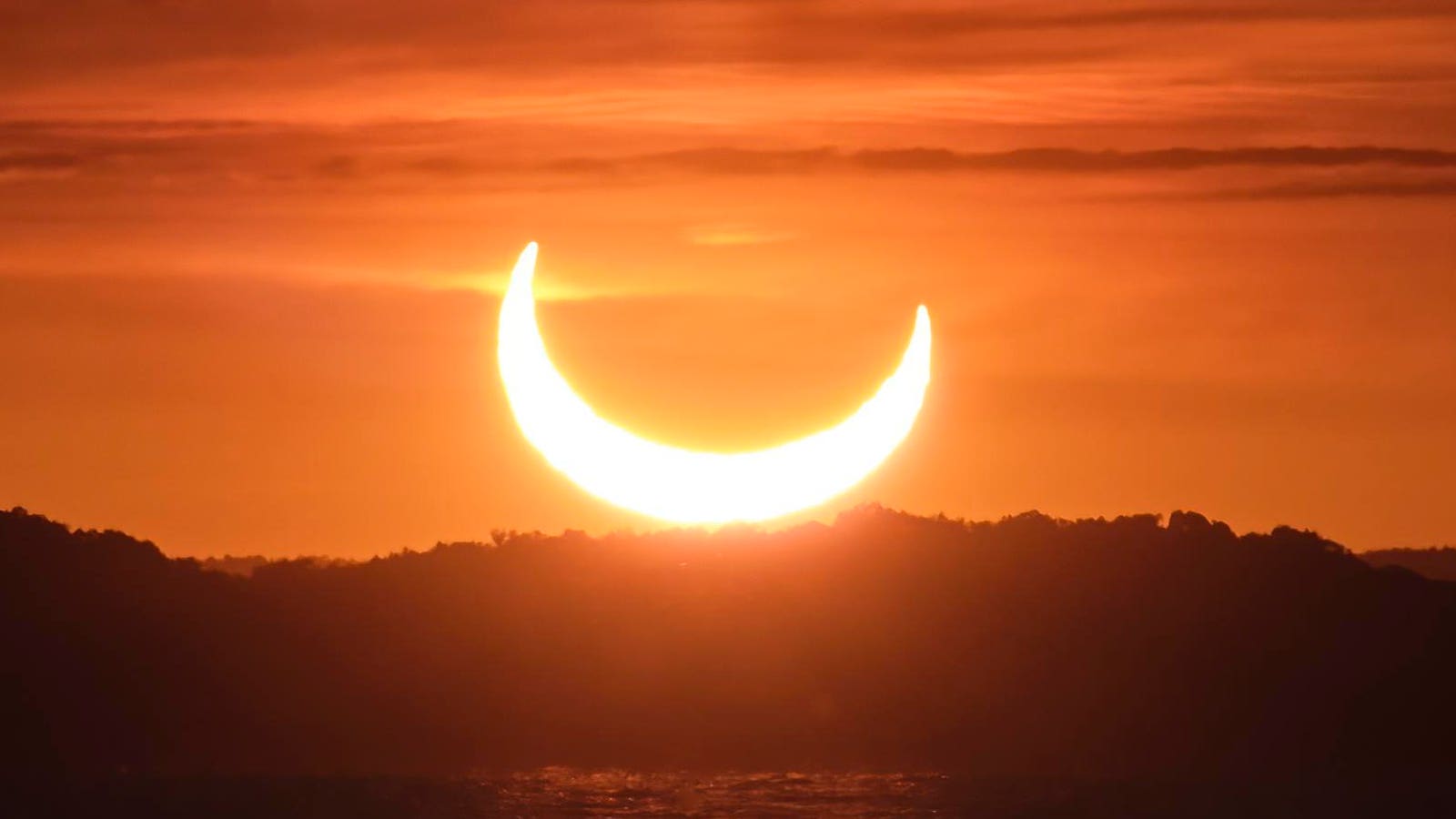The northern lights (aurora borealis) illuminate the sky above a Sami camp outside the village of Breivikeidet near Tromso, Norway, beyond the Arctic Circle on January 1, 2024. (Photo by Sergei GAPON / AFP) (Photo by SERGEI GAPON/AFP via Getty Images)
AFP via Getty Images
Each Monday, I pick out North America’s celestial highlights for the week ahead (which also apply to mid-northern latitudes in the Northern Hemisphere). Check my main feed for more in-depth articles on stargazing, astronomy, eclipses and more.
The Night Sky This Week: Sept. 22-28, 2025
The sun crosses the celestial equator this week, marking the autumn equinox for the Northern Hemisphere. While Monday’s solar eclipse is reserved for the Southern Hemisphere, North America gets plenty to enjoy after dark, chiefly delicate young moon sightings and close pairings with Mars and Antares.
Here’s everything you need to know about stargazing and astronomy this week:
Monday, Sept. 22: Fall Equinox And Northern Lights
At precisely 2:20 p.m. EDT today it’s the fall (or autumnal) equinox. It marks the point when the midday sun is directly above the equator, giving every location on the planet (roughly) 12 hours of daylight and 12 hours of darkness. However, since this is the southward equinox, in the Northern Hemisphere it means days will get shorter, and nights longer, as the sun retreats and becomes lower in the sky. It’s all thanks to the Earth’s 23.5 degree tilt, of course, which explains why we have seasons. Today, the sun will rise due east and set due west.
The Northern and Southern Lights are most intense around the equinoxes, making the weeks surrounding Sept. 22 a great time for potential aurora displays.
Tuesday, Sept. 23: A Young Crescent Moon
Stellarium
Tuesday, Sept. 23: A Young Crescent Moon
After sunset, a razor-thin 4%-lit waxing crescent moon appears just above the west-southwest horizon. Catch it early because it will sink soon after sunset. An unobstructed horizon is key for this one.
Wednesday, Sept. 24: Crescent Moon And Mars
Stellarium
Wednesday, Sept. 24: Crescent Moon And Mars
A brighter, 9%-lit waxing crescent moon tonight hangs near Mars in the south-southwest sky after sunset. Mars and Antares appear similar in color, but are easy to tell apart because while planets shine steadily, stars twinkle.
Thursday, Sept. 25: Crescent Moon, Mars And Antares
Stellarium
Thursday, Sept. 25: Crescent Moon, Mars And Antares
The moon, now 15%-lit, will be between reddish Mars and Antares, the bright heart of Scorpius. Antares’ name means “rival to Mars” because of its similar hue and occasional close pairings.
Saturday, Sept. 27: Moon And Antares
Stellarium
Saturday, Sept. 27: Moon And Antares
The waxing crescent moon, now one-third illuminated, sits just three degrees left of Antares in the southwest sky after sunset. This star — about 550 light-years distant — is a beast, around 700 times larger in diameter than the sun.
The times and dates given apply to mid-northern latitudes. For the most accurate location-specific information, consult online planetariums like Stellarium.
Wishing you clear skies and wide eyes.









